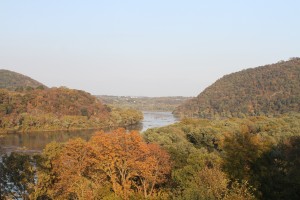The great conservationist John Muir noted that everything in the universe is connected to everything else. Now, scientists at the University of Maryland’s Center for Environmental Science have shown how true that is for the Chesapeake Bay watershed. In nine forested watersheds throughout Pennsylvania, Maryland and Virginia, Dr. Keith Eshleman and his research team found that improving air quality also improves water quality.
Starting in 1990, Clean Air Act amendments required power plants to decrease their emissions of sulfur dioxide and nitrogen oxides to reduce acid rain; a huge problem in the 1970s and 80s that often killed off fish in northeastern mountain lakes and streams. Thanks to these controls, acid rain has declined since then and some ecosystems in the Adirondack Mountains and New England are starting to recover. But in recent study published in the journal Environmental Science and Technology, Eshleman reported that acid rain controls, combined with improved fuel efficiency in motor vehicles, inadvertently has helped reduce nitrogen entering Chesapeake Bay tributaries as well.

Eshleman’s team looked at the amount and concentration of nitrate found in streams from 1986 to 2009 – a period in which nitrogen oxide emissions declined in 20 eastern states by about a third. On average, nitrate levels in the streams studied declined by almost half during this 23 year period. This might seem obvious – after all, what goes up must come down, and if power plants and cars reduce their nitrogen emissions to the air, then less nitrogen will rain down on watersheds and travel downstream. But ecosystems are highly complex. Nitrogen entering the system gets converted and used by plants, animals and bacteria through multiple pathways and in different forms, including nitrate. Because nitrogen often is limited in natural forests, many scientists believed that forest plants and soils could absorb large amounts of excess nitrogen for years before they released any into streams. If that’s the case, then reducing nitrogen deposition in forests would have little impact on pollution levels downstream.
According to Dr. Donald Boesch, president of the University of Maryland Center for Environmental Science, “when we set out to reduce nitrogen pollution to the Chesapeake Bay, deposition of nitrogen resulting from air pollution on the watershed was considered uncontrollable.” We now know that’s not true says Eshleman, and moreover “there’s more gain to be gotten.” He believes that further reductions in nitrogen emissions could reduce pollution levels in the Bay even more. “Everything is controllable,” he says. “We just need to know what lever to push.” John Muir would probably agree.

